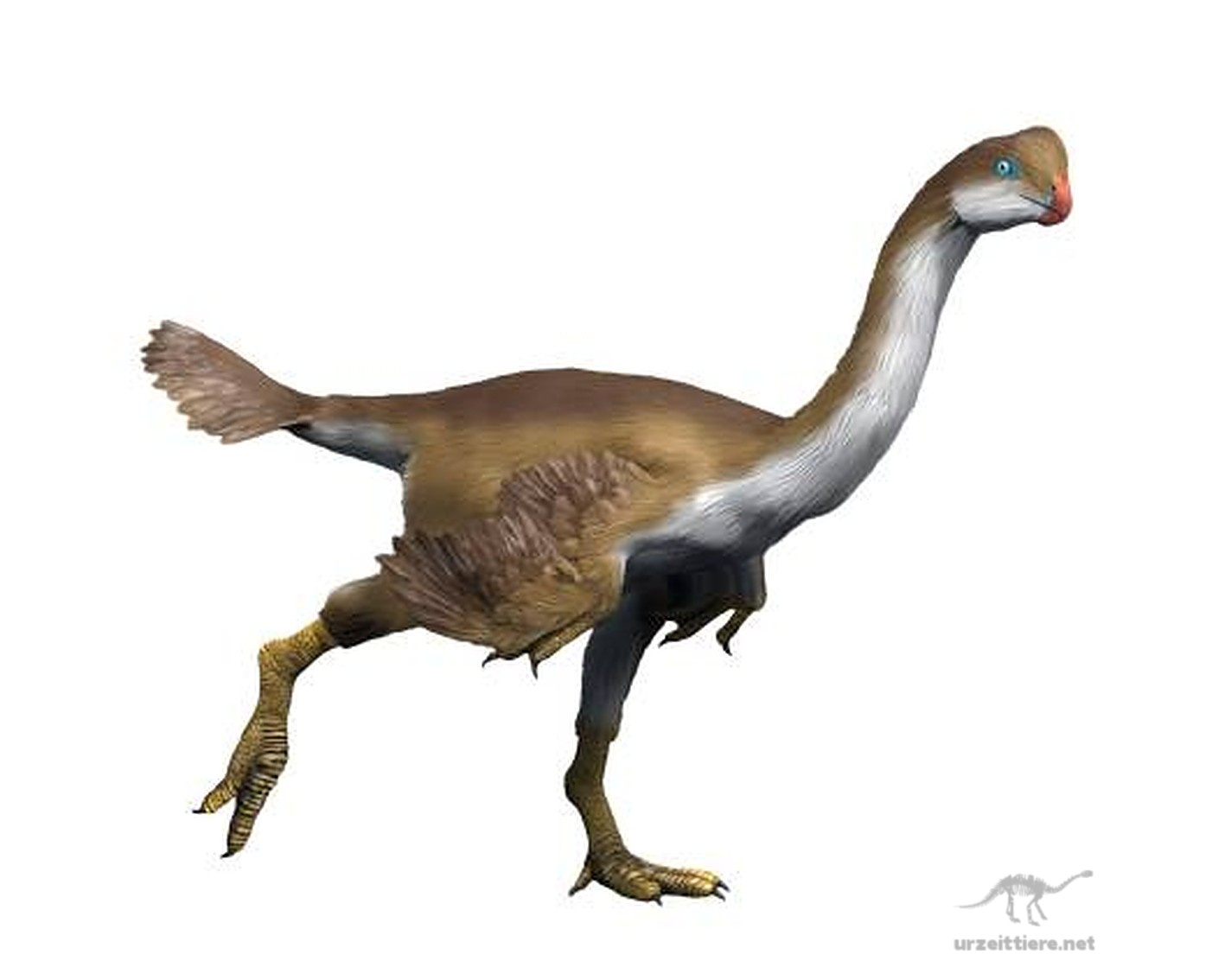
Apartoraptor was a bird-like dinosaur that walked on two feet.
However, it was not bird-like in terms of size. He was about two meters long and weighed 180 kilograms, making him quite a bit larger than a human.
He once lived in the swamps and watery areas of what is now southern Alberta, Canada.
He had a long neck and a long tail.
His neck consisted of at least 11 well-pneumatized cervical vertebrae.
It was probably feathered over its entire body. On his tail he possessed long tail feathers. On top of his head was a prominent crest.
His arms were well muscled. Ulnapillae could be detected on its ulna, which is why the arm can be interpreted as a pennibrachium.
The lower jaw was toothless.
| Profile | Apatoraptor pennatus |
|---|---|
| Prehistoric Era | Late Cretaceous, about 70 million years ago |
| Order | Saurischia |
| Suborder | Theropoda |
| Family | Caenagnathidae |
| Tribe | Caenagnathinae |
| Genus | Apatoraptor |
| Species | Apatoraptor pennatus |
| Height | 0.9 meter |
| Length | 2 meter |
| Weight | 180 kilogram |
| Territory | Horseshoe Canyon Formation in Alberta.[Kanada] |
The name means "deceitful thief". The scientists gave him the name in allusion to the fact that it took so long to find out to which dinosaur family he belonged.
Apatoraptor was found more than 23 years ago and sent to the Royal Tyrrell Museum.
Since Alberta has a huge amount of fossil resources, paleontologists there have to prioritize. Apatoraptor was long thought to be one of the better known ornithomimids. For this reason, the fossil remained in storage for a long time and was not studied in detail.
It was not until 2008 that research was resumed. Only now it was recognized that the fossil represented a species new to science.
Gregory Funston then named and described the type species Apatoraptor in 2016.
Apatoraptor pennatus belongs to the caenagnathid family, which scientists describe as "notoriously enigmatic."
The fossil is considered by far the most complete caenagnathid skeleton from Canada (Alberta). It is also the first articulated caenagnathid skeleton in the world.
--The bones of the animal are still in the same position as at the time of death --.
Scientists have discovered signs of unusual muscles on the forearms of this unusual dinosaur.
However, due to its size, Apatoraptor did not have the ability to fly.
"Because these animals are much too large to fly, they probably used their feathers for display"
Greg Funston
He used the muscles to move his feathers.
Apatoraptors are probably among the most conspicuous dinosaurs. Head crests, tail feathers and also arm feathers were probably used for sexual display.
image source: Nobu Tamura email:nobu.tamura@yahoo.com http://spinops.blogspot.com/ http://paleoexhibit.blogspot.com/, CC BY-SA 4.0 https://creativecommons.org/licenses/by-sa/4.0, via Wikimedia Commons
Roland Tanglao from Vancouver, Canada, CC BY 2.0 https://creativecommons.org/licenses/by/2.0, via Wikimedia Commons